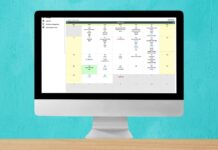In the world of work, taking time off is crucial for staying refreshed and productive.
In this article, we’ll explore what Paid Accrued Time Off is all about and how it differs from Paid Leave.
We’ll discuss why it matters, its benefits, and how businesses can set up a seamless system that syncs with payroll.
What is Paid Accrued Time Off?
Paid Accrued Time Off (ATO) is a system where employees earn paid leave based on hours instead of days. This time off can be utilized for various purposes such as vacation, personal days, sick leave, or other reasons outlined by the employer’s policies.
How Does Paid Accrued Time Off Work?
Accrual
Employees earn a predetermined amount of paid time off for each hour worked or per pay period. The accrual rate may differ based on tenure, job position, or company policy.
Accumulation
Paid time off accumulates in employees’ balances over time as they continue to work and accrue more hours.
Usage
Employees can utilize accrued time off for approved absences from work, providing them with flexibility and work-life balance.
Tracking
Accrued time off is typically tracked through HR or timekeeping systems. Employees can view their accrued balance and request time off through online portals or by contacting their supervisor or HR department.
Why do employees take time off?
Employees may take paid time off for various reasons, including personal well-being, family obligations, or medical appointments.
Here are some examples:
- They want to spend lunch hour doing yoga or some other exercise class and hence need to take some extra time off for this.
- It is 4pm and their child’s childcare centre called them to say their child is unwell and asked them to go down to get the child.
- They overslept.
- They have a medical appointment in the morning but do not want to waste their leave and would rather take time off instead.
- They are only able to schedule certain appointments during the weekday and hence would like to take some time off for these appointments, instead of having to take full day or half day leave.
Offering paid accrued time off acknowledges the diverse needs of employees and supports their work-life balance.
Benefits and Downsides of Paid Accrued Time Off
Paid accrued time off, such as paid annual leave or paid sick leave, can offer several advantages for both employers and employees. However, there are also some potential drawbacks to consider.
Here are the pros and cons:
Benefits of Paid Accrued Time Off
- Employee Well-being: ATO contributes to employee well-being by allowing them to take breaks and attend to personal matters without financial stress.
- Work-Life Balance: It fosters a better work-life balance, leading to increased job satisfaction and productivity.
- Retention and Recruitment: ATO can be a valuable tool for attracting and retaining talent, showcasing the employer’s commitment to employee welfare.
- Legal Compliance: Providing paid accrued time off ensures compliance with labor laws and enhances the employer’s reputation.
Downsides of Paid Accrued Time Off
- Employee Well-being: ATO contributes to employee well-being by allowing them to take breaks and attend to personal matters without financial stress.
- Work-Life Balance: It fosters a better work-life balance, leading to increased job satisfaction and productivity.
- Retention and Recruitment: ATO can be a valuable tool for attracting and retaining talent, showcasing the employer’s commitment to employee welfare.
- Legal Compliance: Providing paid accrued time off ensures compliance with labor laws and enhances the employer’s reputation.
At OpensoftHR, we offer Paid Accrued Time Off to our employees and we find that the benefits outweigh the downsides. We find that it encourages flexibility and allows one to manage one’s leave better, so they do not need to take any unnecessary leave.
Setting Up an Accrued Time Off System that Syncs with Payroll
Implementing an ATO system that integrates seamlessly with payroll is crucial for efficient HR management. Here’s how to set it up:
Define Accrual Policies
Start by establishing clear policies for accruing paid time off. Determine the accrual rate based on factors such as employee tenure, job position, or company policy. Specify how often accruals are calculated, whether it’s monthly, bi-weekly, or based on hours worked.
Choose a Reliable HRMS Software
Select a comprehensive HRMS (Human Resource Management System) software like OpensoftHR that offers integrated payroll and time off management modules. Ensure the software is capable of handling complex accrual calculations and can synchronize data seamlessly between the HR and payroll functions.
Customize Accrual Settings
Configure the ATO settings within your HRMS software to align with your company’s policies. Set up accrual rules based on employee categories, such as full-time, part-time, or contractor status. Define accrual caps and carryover limits to prevent excessive accruals and maintain balance integrity.
Enable Self-Service Features
Empower employees to manage their time off requests and view accrued balances through self-service portals. With OpensoftHR’s employee self-service functionality, workers can submit time off requests, check their accrued balances in real-time, and track the status of their requests without HR intervention.
Automate Accrual Calculations
Leverage automation capabilities within your HRMS software to streamline accrual calculations and eliminate manual errors. Set up automated processes to calculate accruals based on predefined rules and trigger adjustments for any changes in employment status or accrual rates.
Sync with Payroll Processing
Ensure seamless synchronization between the ATO system and payroll processing to accurately reflect time off balances in employee paychecks. OpensoftHR’s payroll integration feature allows for seamless data exchange between the time off management and payroll modules, ensuring that accrued time off balances are reflected in payroll calculations.
Monitor Compliance and Reporting
Regularly monitor ATO balances, usage patterns, and compliance with company policies and legal requirements. Generate reports from your HRMS software to track accruals, usage trends, and compliance metrics. Use these insights to make informed decisions about policy adjustments and resource allocation.
Conclusion
Paid Accrued Time Off is a vital component of employee benefits packages, promoting employee well-being and work-life balance. By implementing an efficient ATO system that syncs with payroll, organizations can ensure accuracy, compliance, and employee satisfaction.
At OpensoftHR, we understand the importance of paid time off in supporting employees’ needs and enhancing organisational productivity. Our integrated HRMS eLeave software simplifies ATO management, empowering both employers and employees to effectively manage time off while ensuring seamless payroll processing.
Reach out to us for a free non-obligatory demo on OpensoftHR eLeave and other HRMs modules today.
 Home
Home












